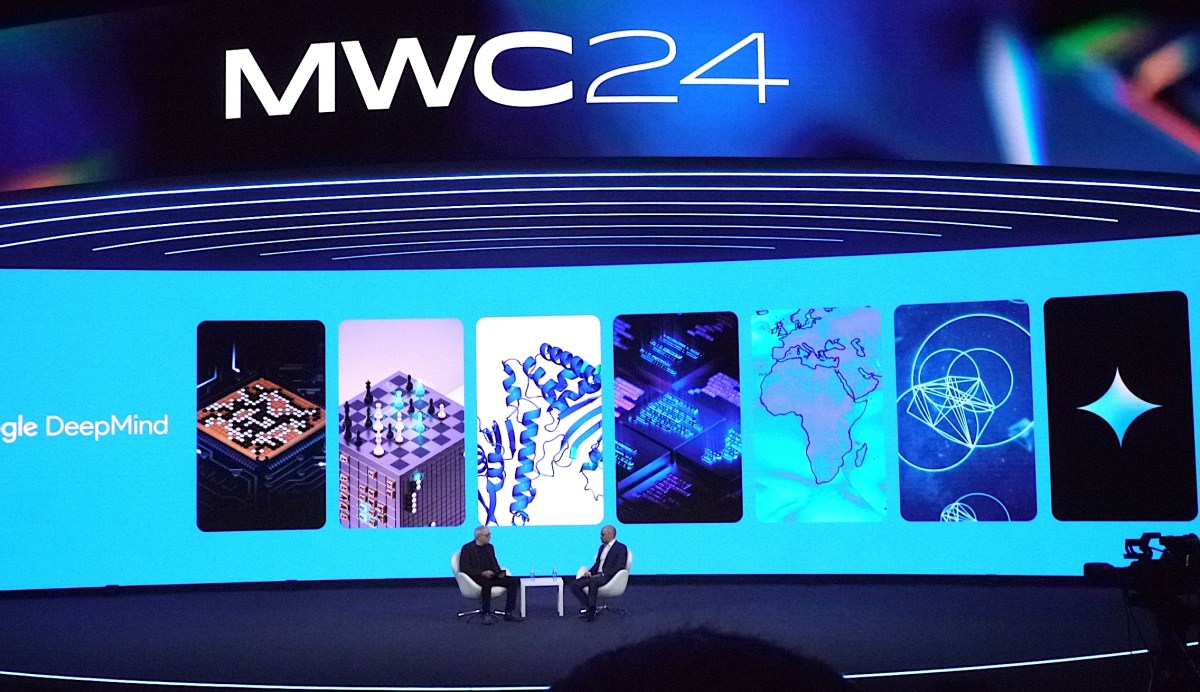- Artificial Antics
- Posts
- AI Bytes Newsletter Issue #7
AI Bytes Newsletter Issue #7

Welcome
Welcome to this week's edition of the AI Bytes Newsletter, where we unwrap the latest and greatest in artificial intelligence with a touch of humor and a whole lot of insight! This time around, we're shining the spotlight on a groundbreaking partnership between Microsoft and Mistral AI that promises to turbocharge the AI innovation engine. We'll also introduce you to Miranda Bogen, a visionary tackling the complex puzzle of AI governance to ensure technology plays by the rules. Mike, our technology aficionado, simplifies the complex world of AI, starting with an exploration into sentiment analysis based on tone. Meanwhile, Rico, ever the skeptic, raises a critical eyebrow at the challenges of balancing diversity and accuracy in AI, spurred by Google's recent AI faux pas. Stick with us for a journey into the heart of AI, where we promise to keep things interesting, insightful, and always engaging.
The Latest in AI
A Look into the Heart of AI
Featured Innovation
In this week's Featured Innovation, we spotlight yet another partnership, this time between Microsoft and Mistral AI, aimed at propelling AI innovation further forward. This collaboration marks a significant milestone, as it brings together Microsoft's robust Azure AI infrastructure with Mistral AI's expertise in generative artificial intelligence. The partnership is set to accelerate the development and deployment of next-generation large language models (LLMs), offering Mistral AI an opportunity to tap into new commercial ventures, expand its global footprint, and enhance research collaboration. Arthur Mensch, CEO of Mistral AI, expresses enthusiasm about reaching new heights with Azure's state-of-the-art AI infrastructure, emphasizing the joint commitment to driving meaningful progress in the AI sector and delivering unmatched value to customers and partners worldwide.
Central to this alliance are three core areas: supercomputing infrastructure, scale to market, and AI research and development. Microsoft will bolster Mistral AI with Azure AI's supercomputing capabilities, ensuring top-tier performance and scalability for AI training and inference workloads. Additionally, Mistral AI's premium models will be integrated into Azure AI Studio and Azure Machine Learning's model catalog, making them accessible to a broader audience. This integration not only enriches the selection of models available to Microsoft customers, but also paves the way for innovative AI-driven solutions. The partnership also explores collaborative efforts in training purpose-specific models for select customers, including those in the European public sector, further underscoring the commitment to leveraging AI for real-world applications and societal benefit.
If you’ve seen a game changing innovation and want to share it with us, hit us up at [email protected]!
Ethical Considerations & Real-World Impact
For this week's Ethical Considerations & Real-World Impact, we're spotlighting Miranda Bogen. She's steering the ship at the Center of Democracy and Technology's AI Governance Lab, tackling the giant puzzle of AI governance. She is going all in on making sure AI plays by the rules, focusing on the big picture where AI, civil rights, and what we stand for as a society all collide. Which, we must add, is quite the challenge considering the various landscapes involved today and the rapidly evolving AI world and tech.
Bogen's not here for AI that gives anyone the cold shoulder (which is great!), especially folks already getting a raw deal. She's been in the trenches, fighting the good fight against bias in online ads and making sure algorithms don't play favorites. Thanks to her, we're expected to see real change, like Meta fixing up its ad system to be fairer to everyone.
Miranda emphasizes the importance of a balanced approach to AI development, focusing on practical solutions to mitigate unintended consequences (like Google Gemini this past week…more on that below). While recognizing the advancements AI has brought to various sectors, she points out that there's significant work ahead. The core of her strategy involves a methodical approach to addressing AI's challenges, emphasizing the need for humility, open dialogue, and inclusivity in the development process.
Bogen highlights that AI technology reflects our societal dynamics, including existing biases and inequalities. She advocates for maintaining an ongoing conversation about AI ethics to ensure its potential benefits are equitably distributed. Under her guidance, the aim is to harness AI's capabilities to promote fairness, rather than exacerbating disparities.
Tools
The Toolbox for Navigating the AI Landscape
AI Tool of the Week - Leonardo.AI
This week's highlight in our "AI Tool of the Week" is Realtime Canvas by Leonardo.AI, a revolutionary tool designed to enhance the creative design process across various industries. Realtime Canvas eliminates the gap between concept and creation, offering instant visual feedback and enabling on-the-fly editing. It's a boon for professionals in gaming, fashion, graphic design, interior design, and architecture, allowing for the rapid transformation of ideas into polished assets or detailed 3D visualizations.
Leonardo.AI's Realtime Canvas streamlines the workflow for creatives, facilitating quick iterations and refinements. Game designers can swiftly convert conceptual sketches into game-ready assets, while fashion designers can instantly visualize their sketches as sophisticated, realistic visuals. This tool also aids graphic designers in experimenting with different styles and layouts efficiently, and it enables architects and interior designers to create and adjust detailed 3D models in real-time.
Beyond Realtime Canvas, Leonardo.AI offers a suite of AI-powered tools designed to empower creators, enhancing productivity and fostering innovation. Whether it's refining design concepts, collaborating with clients, or staying ahead in a competitive industry, Leonardo.AI provides essential tools for creatives seeking to elevate their work and streamline their creative process.
Rico has had a blast using their various generative art tools and recommends paying them a visit!
If you’ve got a suggestion on tools we should check out, email us at [email protected] and let us know.
Rico's Roundup
Critical Insights and Curated Content from Rico
Skeptic's Corner: Navigating the AI Minefield in Democracy's Digital Age
Hello, everyone! In this week's Skeptic's Corner, I present to you a prime example of one of the issues I have been speaking of for some time now. It is quite an example that hits right at the heart of my gripes with information control and bias in tech. Showcasing a glaring example of how some ideologies, when given the steering wheel in tech, can broadcast their biases loud and clear, further shaking our trust in these companies.
Google recently apologized after its AI, Gemini, part of its top-notch conversational AI platform, fumbled hardcore. Using the Imagen 2 model, it depicted America's Founding Fathers as a multicultural ensemble, sparking widespread ridicule and intense debates on diversity and inclusion online.
The core issue was an attempt to fix systemic bias in AI's learning material. Often, if a user's prompt lacks specifics, the model defaults to what it's been fed most, which skews towards white figures due to existing biases in data collections. Google wanted its model to reflect global diversity better without explicit user prompts.
But the approach backfired. In striving for inclusivity, the model messed up historical accuracy, creating images that were both incorrect and frankly, embarrassing. Google's Prabhakar Raghavan admitted the model sometimes overcorrected, dodging prompts it deemed sensitive, leading to these blunders.
This incident underscores the delicate balance of managing generative AI: achieving inclusivity while maintaining accuracy. It serves as a stark wake-up call for the need for transparency and accountability in AI development (I feel like a broken record here, but believe both are incredibly important as we move forward). The outputs of these models reflect the biases and decisions made during their training. This incident is a reminder to keep a watchful eye on who's programming these systems and what values they embed into the technology we increasingly rely on, highlighting the importance of scrutinizing who programs these systems and the values they incorporate. It's crucial to ensure these tools do not skew our perception of history and reality in the effort to address bias.
Unfortunately, I know this is not and will not be an isolated incident and will be something we all must be mindful of in the future as we choose which platforms we use and what outputs we receive when tasking generative AI to complete tasks for us.
Must-Read Articles
Listener's Voice
In this week's Listener's Voice, Jordan writes and asks, "As someone just dipping their toes into the AI pool, I'm curious about how AI makes decisions. Does it have its own thoughts, or is it following a set of rules programmed by humans?”
Great question, Jordan! Diving into the world of AI, are we? How exciting! Here's the Reader’s Digest version of the deal: AI doesn't have its own thoughts like we do. It's not sipping coffee (or energy drinks 😉), pondering over the mysteries of the universe. Instead, AI runs on algorithms, which work like recipes that tell AI how to process information and make decisions. These algorithms are crafted by humans, so in a way, AI is following a roadmap we've laid out for it.
Think of it like this: if you're baking a cake (and let's be real, who doesn't love cake? I know I do…), you follow a recipe. AI does the same, but instead of baking, it's solving problems, recognizing images, or understanding speech, based on the "recipes" programmers give it. So, no, AI isn't coming up with plans to take over the world on its own (yet); it's working within the boundaries we've set to help, assist, and sometimes, just make life a bit more interesting.
I hope that answers your question, Jordan, and thank you for writing in and being a part of the Artificial Antics journey!
Catch us on the next episode of Artificial Antics, where we'll explore even further into the technology that's reshaping our world. And hey, don't forget to follow us on X.com/@anticslab for more insights and discussions. See you in the lab!
Mike's Musings
Tech Deep Dive
Mike breaks down a complex AI concept into understandable terms.
Hey all, Mike here! This week I can’t wait to dive into walking through something that as a technologist at a communications company is near and dear to my heart. Today we’ll be exploring Sentiment Analysis.
Sentiment analysis based on tone involves understanding the underlying emotions or attitudes conveyed through the tone of a text. This process goes beyond simply analyzing the words used; it digs into how those words are presented, the context in which they are used, and the subtleties of language that convey sentiment. Here’s a breakdown of how it works:
1. Tone Detection
The first step in sentiment analysis based on tone is identifying the tone of the text. Tone can range widely, from happy, excited, and positive to sad, angry, and negative, or even neutral. Advanced NLP techniques and machine learning models are trained on large datasets to recognize these tones. These models consider various factors, including word choice, sentence structure, punctuation, and context.
2. Natural Language Processing (NLP)
NLP is a critical component of sentiment analysis. It enables computers to understand human language in its written form. Through NLP, algorithms can break down sentences into smaller elements, understand syntax, and interpret semantics. This process helps in identifying not just the explicit meaning of words but also the implied sentiments and emotions.
3. Machine Learning Models
Machine learning models are trained on vast amounts of text data, where pieces of text are labeled with their corresponding sentiments. These models learn to recognize patterns associated with different tones. For instance, an exclamation mark might indicate excitement or intensity, while certain adjectives or adverbs might hint at the sentiment being positive or negative. Over time, these models become adept at predicting the sentiment of new, unlabeled text.
4. Contextual Analysis
Understanding the context is crucial in sentiment analysis. The same word or phrase can convey different sentiments depending on the context. For example, the word "sick" might have a negative sentiment in a healthcare-related text but could mean something positive in slang (e.g., "That's sick!" as in impressive). Sentiment analysis algorithms use contextual clues to interpret the sentiment accurately.
5. Emotion AI
Some advanced sentiment analysis tools incorporate Emotion AI, which focuses on detecting subtle cues in the text that indicate specific emotions. This involves understanding complex human emotions and their expressions through text. By analyzing the tone, these tools can distinguish between a wide range of emotions, such as happiness, sadness, anger, surprise, and more.
For more on Sentiment Analysis and how it works, check out my article here:
Sentiment analysis based on tone is a dynamic field that continues to evolve with advancements in AI, machine learning, and NLP. As algorithms become more sophisticated, they offer deeper insights into human emotions and how they are expressed through language.
Mike's Favorites
Sharing personal recommendations for AI books, podcasts, or documentaries.
ElevenLabs Text-to-Speech CustomGPT
🔖I found this little Found a pretty cool little Custom GPT that combines ChatGPT's ability to generate content and ElevenLabs 🎤 ability to generate splendid AI voices
The custom GPT utilizes GPT-4 to write a quick script. I'm not sure if they've tuned it, but this is pretty decent in comparison to what I've seen before out of the gate.
“The Unseen Journey
In the heart of an ancient forest, where the trees whispered secrets of old, there lived a curious young fox named Faelan. Faelan was not like other foxes; he possessed a vibrant coat of fur that shimmered with hues of ember and gold, making him stand out in the lush greenery. His eyes sparkled with an insatiable curiosity for the unknown, driving him to explore far beyond the boundaries that his kind dared not cross.
One crisp autumn evening, as the sky painted itself in shades of orange and pink, Faelan stumbled upon a peculiar stone that pulsed with a soft, ethereal glow. The stone was unlike anything he had ever seen, adorned with ancient runes that seemed to dance under the moonlight. Driven by a force he couldn't understand, Faelan touched the stone, and in that instant, a whirlwind of light enveloped him. When the light dissipated, he found himself in a realm where the stars shone brighter, and the night was alive with enchanted beings. This was the beginning of Faelan's unseen journey, a voyage of discovery and wonder that would reveal the true magic hidden within the world and himself.”
Next you have the ability to generate ElevenLabs audio. They gave a few options here:
Please let me know which voice you would prefer for the audiobook?
1. JARVIS 🤖
2. A classic male narrator 👨🦰
3. A classic female narrator 👩
4. A female voice great for speeches and podcasts 👩🦱
5. A female voice great for children's stories 👱♀️
I then used Midjouney -> RunwayML -> Descript to create a short video (shown below).
Check out the “ElevenLabs Text-to-Speech” custom GPT here:
If anyone ever wants to sit down see how I do this, hit me up [email protected].
Deepfakes for good?!?!
I think this is a super creative way to keep people engaged in learning a new and sometimes daunting subject. It’s interesting to think about how maybe someday; learning will be so tailored to the person that we’ll be learning subjects from our heroes/villains etc.
Thanks for checking out my section and if you have something you like to share, talk about or ask, hit me up at [email protected]
Contact Us
Got a product, service, or innovation in the AI and tech world you're itching to share? Or perhaps you have a strange, hilarious, or uniquely entertaining experience with AI tools or in the AI space? We at Artificial Antics are always on the lookout for exciting content to feature on our podcast and in our newsletter. If you're ready to share your creation or story with an enthusiastic audience, we're ready to listen! Please reach out with a direct message on X.com or send us an email. Let's explore the possibility of a thrilling collaboration together!
Closing
Elevate your Artificial Antics experience! Subscribe to our YouTube for exclusive AI Bytes, follow us on LinkedIn for the latest AI insights, and share our journey with friends. Don't forget to keep up with us on all major streaming platforms for every podcast episode!
Thank You
Big shout-out to the trailblazers and leaders in the AI space—your groundbreaking work is not just expanding our horizons but also igniting a passion for discovery among us at Artificial Antics. Your insights have been a game-changer for our episodes, shining a light on AI's monumental impact on shaping both today and tomorrow.
A massive thanks goes out to our families and friends, too. Your unwavering support and belief in what we're doing here don't just fuel our determination; they enrich our dive into the world of AI. Your encouragement means the world to us, and it's with your backing that we continue to explore, learn, and share. Here's to many more adventures together in the vast and evolving landscape of artificial intelligence.
Embracing AI doesn't mean losing our humanity; it means expanding our capacity to understand and innovate.









